Hybrid Advanced Oxidation Processes Involving Ultrasound: An Overview
Abstract
1. Introduction
- Cavity interior (gaseous region): in this zone, hydrophobic and volatile molecules are degraded due to high temperature. The cavitation bubbles produce free radicals such as HO• and H• by the pyrolysis of water molecules.
- Gas–liquid interface: the primary radicals produced inside the cavitation bubbles can react with solutes adsorbed at the cavitation bubble and solution interface, thus originating the degradation progress.
- Bulk solution: the free radicals move from the gas–liquid interface into the bulk solution to produce secondary sonochemical reactions. Subsequently, the degradation reaction pathway occursbased on the pollutant nature such as solubility, volatility and surface action.
2. Ultrasound-Based Hybrid Advanced Oxidation Processes (AOPs)
3. Sonolysis
4. Sonocatalysis
5. Sonophotocatalysis
6. Fenton, Sono-Fenton, and Sonophoto-Fenton Processes
7. Summary
Funding
Acknowledgments
Conflicts of Interest
References
- Díaz-Cruz, M.S.; Barceló, D. Trace organic chemicals contamination in ground water recharge. Chemosphere 2008, 72, 333–342. [Google Scholar] [CrossRef] [PubMed]
- Mohapatra, D.P.; Brar, S.K.; Tyagi, R.D.; Surampalli, R.Y. Physico-chemical pretreatment and biotransformation of wastewater and wastewater sludge-fate of bisphenol A. Chemosphere 2010, 78, 923–941. [Google Scholar] [CrossRef] [PubMed]
- Madhavan, J.; Grieser, F.; Ashokkumar, M. Sonophotocatalytic degradation of paracetamol using TiO2 and Fe3+. Sep. Purif. Technol. 2013, 103, 114–118. [Google Scholar]
- Madhavan, J.; Kumar, P.S.; Anandan, S.; Grieser, F.; Ashokkumar, M. Degradation of acid red 88 by the combination of sonolysis and photocatalysis. Sep. Purif. Technol. 2010, 7744, 336–341. [Google Scholar] [CrossRef]
- Madhavan, J.; Grieser, F.; Ashokkumar, M. Sonophotocatalytic degradation of Formetanate hydrochloride using homogeneous and heterogenousphotocatalysts. Sep. Purif. Technol. 2010, 73, 409–414. [Google Scholar] [CrossRef]
- Madhavan, J.; Kumar, P.S.; Grieser, F.; Ashokkumar, M.; Anandan, S. Sonophotocatalytic degradation of diclofenac using doped and undoped semiconductor nanopartilces. Chemosphere 2010, 80, 747–752. [Google Scholar] [CrossRef]
- Madhavan, J.; Kumar, P.S.; Grieser, F.; Ashokkumar, M.; Anandan, S. Sonophotocatalytic degradation of monocrotophos using TiO2 and Fe3+. J. Hazard. Mater. 2010, 177, 944–949. [Google Scholar] [CrossRef] [PubMed]
- Belvar, C.; Bellod, R.; Fuerte, A.; Garcia, M.F. Nitrogen-containing TiO2 photocatalysts: Part Synthesis and solid characterization. Appl. Catal. B Environ. 2006, 65, 301–308. [Google Scholar] [CrossRef]
- Kudo, T.; Nakamura, Y.; Ruike, A. Development of rectangular column structured titanium oxide photocatalysts anchored on silica sheets by a wet process. Res. Chem. Intermed. 2003, 29, 631–639. [Google Scholar] [CrossRef]
- Bahnemann, D. Photocatalytic water treatment: Solar Energy Applications. Solar Energy 2004, 77, 445–459. [Google Scholar] [CrossRef]
- Theerthagiri, J.; Senthil, R.A.; Thirumalai, D.; Madhavan, J. Sonophotocatalytic Degradation of Organic Pollutants Using Nanomaterials. In Handbook of Ultrasonics and Sonochemistry; Springer: Berlin/Heidelberg, Germany, 2016; pp. 553–586. [Google Scholar] [CrossRef]
- Carp, O.; Huisman, C.L.; Reller, A. Photoinduced reactivity of titanium dioxide. Prog. Solid State Chem. 2004, 32, 33–177. [Google Scholar] [CrossRef]
- Choi, H.; Al-Abed, S.R.; Dionysiou, D.D.; Stathatos, E.; Lianos, P. TiO2-Based Advanced Oxidation Nanotechnologies for Water Purification and Reuse: Sustainability Science and Engineering; Elsevier: Amsterdam, The Netherlands, 2010; Chapter 8; pp. 229–254. [Google Scholar]
- Khataee, A.R.; Kasiri, M.B. Artificial neural networks modeling of contaminated water treatment processes by homogeneous and heterogeneous nanocatalysis. J. Mol. Catal. A Chem. 2010, 331, 86–100. [Google Scholar] [CrossRef]
- Madhavan, J.; Greiser, F.; Ashokkumar, M. Degradation of Orange G by advanced oxidation processes. Ultrason. Sonochem. 2010, 17, 338–343. [Google Scholar] [CrossRef] [PubMed]
- Madhavan, J.; Maruthamuthu, P.; Ashokkumar, M.; Murugesan, S. Kinetics of degradation of acid red 88 in presence of Co2+-ion/peroxomonosulfate reagent. Appl. Catal. A Gen. 2009, 368, 35–39. [Google Scholar] [CrossRef]
- Theerthagiri, J.; Senthil, R.A.; Priya, A.; Madhavan, J.; Muthupandian, A. Synthesis of visible-light active V2O5/g-C3N4 composite photocatalyst. New J. Chem. 2015, 39, 1367–1374. [Google Scholar]
- Theerthagiri, J.; Senthil, R.A.; Madhavan, J.; Neppolian, B. A comparative study on the role of precursors of graphitic carbon nitrides for the photocatalytic degradation of direct red 81. Mater. Sci. Forum. 2015, 807, 101–113. [Google Scholar] [CrossRef]
- Sherine, O.O.; Gerald, J.M. Nanostructured Materials for Environmental Remediation of Organic Contaminants in Water. J. Environ. Sci. Health Part A Toxic/Hazard. Subst. Environ. Eng. 2004, 39, 2549–2582. [Google Scholar]
- Theerthagiri, J.; Senthil, R.A.; Priya, A.; Madhavan, J.; Michael, R.J.V.; Ashokkumar, M. Photocatalytic and photoelectrochemical studies of Visible-light active α-Fe2O3-g-C3N4nanocomposites. RSC Adv. 2014, 4, 38222–38229. [Google Scholar] [CrossRef]
- Theerthagiri, J.; Senthil, R.A.; Malathi, A.; Selvi, A.; Madhavan, J.; Ashokkumar, M. Synthesis and characterization of CuS-WO3 composite photocatayst for enhanced visible light photocatalytic activity. RSC Adv. 2015, 5, 52718–52725. [Google Scholar] [CrossRef]
- Khin, M.M.; Nair, A.S.; Babu, V.J.; Rajendran, M.; Ramakrishna, S. A review on nanomaterials for environmental remediation. Energy Environ. Sci. 2012, 8, 8075–8109. [Google Scholar] [CrossRef]
- Theerthagiri, J.; Senthil, R.A.; Senthilkumar, B.; Polu, A.R.; Madhavan, J.; Ashokkumar, M. Recent advances in MoS2 nanostructured materials for energy and environmental applications—A Review. J. Solid State Chem. 2017, 252, 43–71. [Google Scholar] [CrossRef]
- Micheal, K.; Ayeshamariam, A.; Boddula, R.; Arunachalam, P.; Al-Salhi, M.S.; Theerthagiri, J.; Prasad, S.; Madhavan, J.; Al-Mayouf, A.M.; Mariam, A. Assembled composite of hematite iron oxide on sponge-like BiOCl with enhanced photocatalytic activity. Mater. Sci. Energy Technol. 2019, 2, 104–111. [Google Scholar] [CrossRef]
- Khataee, A.R.; Pons, M.N.; Zahraa, O. Photocatalytic degradation of three azo dyes using immobilized TiO2 nanoparticles on glass plates activated by UV light irradiation: Influence of dye molecular structure. J. Hazard. Mater. 2009, 168, 451–457. [Google Scholar] [CrossRef] [PubMed]
- Khataee, A.; Vatanpour, V.; Ghadim, A.A.; Khataee, A. Decolorization of C.I. Acid Blue 9 solution by UV/nano-TiO2, Fenton, Fenton-like, electro-Fenton and electrocoagulation processes: A comparative study. J. Hazard. Mater. 2009, 161, 1225–1233. [Google Scholar] [CrossRef] [PubMed]
- Flint, E.B.; Suslick, K.S. The temperature of cavitation. Science 1991, 253, 1397–1399. [Google Scholar] [CrossRef] [PubMed]
- Mason, T.J.; Lorimer, J.P. Sonochemistry (Theory, Applicationsand Uses of Ultrasound in Chemistry); Halsted Press (Wiley): Chichester, UK, 1988; Volume 10, pp. 1150–1151. [Google Scholar]
- Adewuyi, Y.G.; Appaw, C. Sonochemical oxidation of carbon di sulphide in aqueous solutions: Reaction kinetics and pathways. Ind. Eng. Chem. Res. 2002, 41, 4957–4964. [Google Scholar] [CrossRef]
- Appaw, C.; Adewuyi, Y.G. Destruction of carbon disulfide in aqueous solutions by sonochemical oxidation. J. Hazard. Mater. B 2002, 90, 237–249. [Google Scholar] [CrossRef]
- Ley, S.V.; Low, C.M.R. Ultrasound in Synthesis, Reactivity and Structure: Concepts in Organic Chemistry; Springer: Berlin, Germany, 1989. [Google Scholar]
- Lu, Y.; Weavers, L.K. Sonochemical desorption and destruction of 4-chlorobiphenyl from synthetic sediments. Environ. Sci. Technol. 2002, 36, 232–237. [Google Scholar] [CrossRef]
- Hua, I.; Hoffmann, M.R. Optimization of Utrasonic radiation as an advanced oxidation technology. Environ. Sci. Technol. 1997, 31, 2237–2243. [Google Scholar] [CrossRef]
- Gogate, P.R.; Pandit, A.B. Sonophotocatalytic Reactors forWastewater Treatment: A Critical Review. AIChE J. 2004, 50, 1051–1079. [Google Scholar] [CrossRef]
- Madhavan, J.; Greiser, F.; Ashokkumar, M. Degradation of Orange G by sonophoto Fenton process. Water Sci. Technol. 2009, 60, 2195–2202. [Google Scholar] [CrossRef] [PubMed]
- Malathi, A.; Arunachalam, P.; Madhavan, J.; Ashokkumar, M. A review on BiVO4 photocatalyst: Morphology control, activity enhancement for solar photocatalytic applications. Appl. Catal. A Gen. 2018, 555, 47–74. [Google Scholar]
- Richards, W.T.; Loomis, A.L. The chemical effects of high frequency sound waves I: A preliminary survey. J. Am. Chem. Soc. 1927, 49, 3086–3100. [Google Scholar] [CrossRef]
- Deng, Y.; Zhao, R. Advanced Oxidation Processes (AOPs) in Wastewater Treatment. Curr. Pollut. Rep. 2015, 1, 167–176. [Google Scholar] [CrossRef]
- Kansal, S.K.; Singh, M.; Sud, D. Studies on photodegradation of two commercial dyes in aqueous phase using different photocatalysts. J. Hazard. Mater. 2007, 141, 581–590. [Google Scholar] [CrossRef] [PubMed]
- Gouvêa, C.A.; Wypych, F.; Moraes, S.G.; Durán, N.; Nagata, N.; Peralta-Zamora, P. Semiconductor-assisted photocatalytic degradation of reactive dyes in aqueous solution. Chemosphere 2000, 40, 433–440. [Google Scholar] [CrossRef]
- Neppolian, B.; Choi, H.C.; Sakthivel, S.; Banumathi, A.; Murugesan, V. Solar/UV-induced photocatalytic degradation of three commercial textile dyes. J. Hazard. Mater. 2002, 89, 303–317. [Google Scholar] [CrossRef]
- Cristian, L.; Juanita, F.; Jaime, B.; Mansilla, H.D. Optimized photodegradation of Reaction Blue 19 on TiO2 and ZnO. Catal. Today 2002, 76, 235–246. [Google Scholar]
- Rajat, A.; Jitendra, V.; Punjabi, P.B.; Ameta, S.C. Use of semiconducting iron(III) oxide in photocatalytic bleaching of some dyes. Ind. J. Chem. Technol. 2006, 13, 114–118. [Google Scholar]
- Li, W.; Allioux, F.M.; Lee, J.; Ashokkumar, M.; Dumée, L.F. Ultrasound-assisted fabrication of metal nano-porous shells across polymer beads and their catalytic activity for reduction of 4-nitrophenol. Ultrason. Sonochem. 2018, 49, 63–68. [Google Scholar] [CrossRef]
- Theerthagiri, J.; Sunitha, S.; Senthil, R.A.; Nithyadharseni, P.; Madankumar, A.; Arunachalam, P.; Maiyalagan, T.; Kim, H.S. A review on ZnO nanostructured materials: Energy, environmental and biological applications. Nanotechnology 2019, 30, 39200. [Google Scholar] [CrossRef] [PubMed]
- Colmenares, J.C.; Xu, Y.J. Heterogeneous Photocatalysis: From Fundamentals to Green Applications; Springer: Berlin/Heidelberg, Germany, 2016; ISBN 978-3-662-48717-4. [Google Scholar] [CrossRef]
- Chatel, G.; Colmenares, J.C. Sonochemistry: From Basic Principles to Innovative Applications; Springer International Publishing: Cham, Switzerland, 2017. [Google Scholar]
- Chatel, G.; Behling, S.V.R.; Colmenares, J.C. A Combined Approach using Sonochemistry and Photocatalysis: How to Apply Sonophotocatalysis for Biomass Conversion? ChemCatChem 2017, 9, 2615–2621. [Google Scholar] [CrossRef]
- Adewuyi, Y.G. Sonochemistry: Environmental Science and Engineering Applications. Ind. Eng. Chem. Res. 2001, 40, 4681–4715. [Google Scholar] [CrossRef]
- Wang, J.; Jiang, Y.; Zhang, Z.; Zhao, G.; Zhang, G.; Ma, T.; Sun, W. Investigation on the sonocatalytic degradation of congo red catalyzed by nanometer rutile TiO2 powder and various influencing factors. Desalination 2007, 216, 196–208. [Google Scholar] [CrossRef]
- Bruce, D.A.; Nareddy, A. Sonochemical Reaction Engineering, Encyclopedia of Chemical Processing; Lee, S., Ed.; CRC Press: Boca Raton, FL, USA, 2006; pp. 2811–2823. [Google Scholar]
- Hoffmann, M.R.; Hua, I.; Höchemer, R. Application of ultrasonic irradiation for the degradation of chemical contaminants in water. Ultrason. Sonochem. 1996, 3, S163–S172. [Google Scholar] [CrossRef]
- Adewuyi, Y.G. Sonochemistry in environmental remediation I: Combinative and hybrid sonophotochemical oxidation processes for the treatment of pollutants in water. Environ. Sci. Technol. 2005, 39, 3409–3420. [Google Scholar] [CrossRef]
- Adewuyi, Y.G. Sonochemistry in environmental remediation II: Heterogeneous sonophotocatalytic oxidation processes for the treatment of pollutants in water. Environ. Sci. Technol. 2005, 39, 8557–8570. [Google Scholar] [CrossRef] [PubMed]
- Gonzalez-Garcia, J.; Saez, V.; Tudela, I.; Diez-Garcia, M.I.; Esclapez, M.D.; Louisnard, O. Sonochemical treatment of water polluted by chlorinated organo compounds. Water 2010, 2, 28–74. [Google Scholar] [CrossRef]
- Chowdhury, P.; Viraraghavan, T. Sonochemical degradation of chlorinated organic compounds, phenolic compounds and organic dyes: A review. Sci. Total Environ. 2009, 407, 2474–2492. [Google Scholar] [CrossRef] [PubMed]
- Babu, S.G.; Ashokkumar, M.; Neppolian, B. The role of ultrasound on advanced oxidation processes. Top. Curr. Chem. 2016, 374, 75. [Google Scholar] [CrossRef] [PubMed]
- Panda, D.; Manickam, S. Recent advancements in the sonophotocatalysis (SPC) and doped-sonophotocatalysis (DSPC) for the treatment of recalcitrant hazardous organic water pollutants. Ultrason. Sonochem. 2017, 36, 481–496. [Google Scholar] [CrossRef] [PubMed]
- Ollis, D.F.; Al-Ekabi, H. Photocatalytic purification and treatment of water and air. In Proceedings of the 1st International Conference on TiO2 Photocatalytic Purification and Treatment of Water and Air, London, ON, Canada, 8–13 November 1992. [Google Scholar]
- Asim, N.; Badeiei, M.; Ghoreishi, B.K.; Ludin, N.A.; Reza, M. New developments in photocatalysts modification: Case study of WO3. In Advances in Fluid Mechanics and Heat & Mass Transfer, Proceedings of the 10th WSEAS International Conference on Heat Transfer, Thermal Engineering and Environment (HTE ‘12), Istanbul, Turkey, 21–23 August 2012; WSEAS Press: Stevens Point, WI, USA, 2012; pp. 110–116. ISBN 978-1-61804-114-2. [Google Scholar]
- Pilli, S.; Bhunia, P.; Yan, S.; LeBlanc, R.J.; Tyagi, R.D.; Surampalli, R.Y. Ultrasonic retreatment of sludge: A review. Ultrason. Sonochem. 2011, 18, 1–18. [Google Scholar] [CrossRef] [PubMed]
- Thangavadivel, K.; Konagay, M.; Okitsu, K.; Ashokkumar, M. Ultrasound-assisted degradation of methyl orange in a micro reactor. J. Environ. Chem. Eng. 2014, 2, 1841–1845. [Google Scholar] [CrossRef]
- Margulis, M.A.; Margulis, I.M. Mechanism of sonochemical reactions and sonoluminescence. High Energy Chem. 2004, 38, 285–294. [Google Scholar] [CrossRef]
- Entezari, M.H.; Heshmati, A.; Yazdi, S. A combination of ultrasound and inorganic catalyst: Removal of 2-chlorophenol from aqueous solution. Ultrason. Sonochem. 2005, 12, 137–141. [Google Scholar] [CrossRef] [PubMed]
- Henglein, A.; Gutierrez, M. Sonolysis of polymers in aqueous solution. New observations on pyrolysis and mechanical degradation. J. Phys. Chem. 1988, 92, 3705–3707. [Google Scholar] [CrossRef]
- Mason, T.J.; Lorimer, J.P.; Bates, D.M.; Zhao, Y. Dosimetry in sonochemistry: The use of aqueous terephthalate ion as a fluorescence monitor. Ultrason. Sonochem. 1994, 1, S91–S95. [Google Scholar] [CrossRef]
- Mason, T.J.; Bernal, V.S. An introduction to sonoelectrochemistry. In Power Ultrasound in Electrochemistry; Pollet, B.G., Ed.; John Wiley & Sons Ltd.: Hoboken, NJ, USA, 2012. [Google Scholar]
- Nair, R.R.; Patel, R.L. Treatment of Dye Wastewater by Sonolysis Process. IJRMEET 2014, 2, 2320–6586. [Google Scholar]
- Nejumal, K.K.; Manoj, P.R.; Aravind, U.K.; Aravindakumar, C.T. Sonochemical degradation of a pharmaceutical waste, atenolol, in aqueous medium. Environ. Sci. Pollut. Res. 2014, 21, 4297–4308. [Google Scholar] [CrossRef]
- Rayaroth, M.P.; Aravind, U.K.; Aravindakumar, C.T. Ultrasound based AOP for emerging pollutants: From degradation to mechanism. Environ. Sci. Pollut. Res. 2017, 24, 6261–6269. [Google Scholar] [CrossRef]
- Dalhatou, S.; Pétrier, C.; Laminsi, S.; Baup, S. Sonochemical removal of naphthol blue black azo dye: Influence of parameters and effect of mineral ions. Int. J. Environ. Sci. Technol. 2015, 12, 35–44. [Google Scholar] [CrossRef]
- Rahmani, H.; Gholami, M.; Mahvi, A.H.; Alimohammadi, M.; Azarian, G.; Esrafili, A.; Rahmani, K.; Farzadkia, M. Tinidazole Removal from Aqueous Solution by Sonolysisin the Presence of Hydrogen Peroxide. Bull. Environ. Contam. Toxicol. 2014, 92, 341–346. [Google Scholar] [CrossRef] [PubMed]
- Drijvers, D.; Langenhove, H.V.; Herrygers, V. Sonolysis of fluoro-, chloro-, bromo-and iodobenzene: A comparative study. Ultrason. Sonochem. 2000, 7, 87–95. [Google Scholar] [CrossRef]
- Kidak, R.; Ince, N.H. Ultrasonic destruction of phenol and substituted phenols: A review of current research. Ultrason. Sonochem. 2006, 13, 195–199. [Google Scholar] [CrossRef] [PubMed]
- Liu, H.; Liang, M.Y.; Liu, C.S.; Gao, Y.X.; Zhou, J.M. Catalytic degradation of phenol in sonolysis by coal ash and H2O2/O3. Chem. Eng. J. 2009, 153, 131–137. [Google Scholar] [CrossRef]
- Ku, Y.; Tu, Y.H.; Ma, C.M. Effect of hydrogen peroxide on the decomposition of monochlorophenols by sonolysis in aqueous solution. Water Res. 2005, 39, 1093–1098. [Google Scholar] [CrossRef] [PubMed]
- Lim, M.; Son, Y.; Yang, J.; Khim, J. Addition of chlorinated compounds in the sonochemical degradation of 2-chlorophenol. Jpn. J. Appl. Phys. 2008, 47, 4123–4126. [Google Scholar] [CrossRef]
- Francony, A.; Petrier, C. Sonochemical degradation of carbon tetrachloride in aqueous solution at two frequencies: 20 kHz and 500 kHz. Ultrason. Sonochem. 1996, 3, 77–82. [Google Scholar] [CrossRef]
- Wang, J.; Sun, W.; Zhang, Z.; Zhang, X.; Li, R.; Ma, T.; Zhang, P.; Li, Y. Sonocatalytic degradation of methyl parathion in the presence of micron-sized and nano-sized rutile titanium dioxide catalysts and comparison of their sonocatalytic abilities. J. Mol. Catal. A Chem. 2007, 272, 84–90. [Google Scholar] [CrossRef]
- Li, J.; Cai, J.; Fan, L. Effect of sonolysis on kinetics and physicochemical properties of treated chitosan. J. Appl. Polym. Sci. 2008, 109, 2417–2425. [Google Scholar] [CrossRef]
- Bahena, C.L.; Martinez, S.S.; Guzman, D.M.; Hernandez, M.D. Sonophotocatalytic degradation of alazine and gesaprim commercial herbicides in TiO2 slurry. Chemosphere 2008, 71, 982–989. [Google Scholar] [CrossRef] [PubMed]
- Nanzai, B.; Okitsu, K.; Takenaka, N.; Bandow, H. Sonochemical degradation of alkylbenzenesulfonates and kinetics analysis with a langmuir type mechanism. J. Phys. Chem. C 2009, 113, 3735–3739. [Google Scholar] [CrossRef]
- David, B. Sonochemical degradation of PAH in aqueous solution. Part I: Monocomponent PAH solution. Ultrason. Sonochem. 2009, 16, 260–265. [Google Scholar] [CrossRef] [PubMed]
- Zhang, H.; Jiang, M.; Wang, Z.; Wu, F. Decolorisation of CI Reactive Black 8 by zerovalent iron powder with/without ultrasonic irradiation. Color. Technol. 2007, 123, 203–208. [Google Scholar] [CrossRef]
- Wang, J.; Wang, X.; Guo, P.; Yu, J. Degradation of reactive brilliant red K-2BP in aqueous solution using swirling jet-induced cavitation combined with H2O2. Ultrason. Sonochem. 2011, 18, 494–500. [Google Scholar] [CrossRef] [PubMed]
- Priya, M.H.; Madras, G. Kinetics of TiO2-catalyzed ultrasonic degradation of Rhodamine dyes. Ind. Eng. Chem. Res. 2006, 45, 913–921. [Google Scholar] [CrossRef]
- Torres-Palma, R.A.; Serna-Galvis, E.A. Chapter 7 Sonolysis. In Advanced Oxidation Processes for Waste Water Treatment; Elsevier: Amsterdam, The Netherlands, 2018; pp. 177–213. [Google Scholar]
- Vadivel, S.; Theerthagiri, J.; Madhavan, J.; Maruthamani, D. Synthesis of polyaniline/graphene oxide composite via ultrasonication method for photocatalytic applications. Mater. Focus 2016, 5, 393–397. [Google Scholar] [CrossRef]
- Sivalingam, G.; Nagaveni, K.; Hegde, M.S.; Giridhar, M. Photocatalytic degradation of various dyes by combustion synthesized nanoanatase TiO2. Appl. Catal. B Environ. 2003, 45, 23–38. [Google Scholar] [CrossRef]
- Li, J.; Xu, Y.; Liu, Y.; Wu, D.; Sun, Y. Synthesis of hydrophilic ZnSnanocrystals and their application in photocatalytic degradation of dye pollutants. China Particuol. 2004, 2, 266–269. [Google Scholar] [CrossRef]
- Sajjadi, S.; Khataee, A.; Kamali, M. Sonocatalytic degradation of methylene blue by a novel graphene quantum dots anchored CdSenanocatalyst. Ultrason. Sonochem. 2017, 39, 676–685. [Google Scholar] [CrossRef]
- Mehrizad, A.; Behnajady, M.A.; Gharbani, P.; Sabbagh, S. Sonocatalytic degradation of Acid Red 1 by sonochemically synthesized zinc sulfide-titanium dioxide nanotubes: Optimization, kinetics and thermodynamics studies. J. Clean. Prod. 2019, 215, 1341–1350. [Google Scholar] [CrossRef]
- Pang, Y.L.; Abdullah, A.Z. Comparative study on the process behaviour and reaction kinetics in sonocatalytic degradation of organic dyes by powder and nanotubes TiO2. Ultrason. Sonochem. 2012, 19, 642–651. [Google Scholar] [CrossRef] [PubMed]
- Wang, J.; Guo, B.; Zhang, X.; Zhang, Z.; Han, J.; Wu, J. Sonocatalytic degradation of methyl orange in the presence of TiO2 catalysts and catalytic activity com-parison of rutile and anatase. Ultrason. Sonochem. 2005, 12, 331–337. [Google Scholar] [CrossRef] [PubMed]
- Areerob, Y.; Cho, J.Y.; Jang, W.K.; Oh, W.C. Enhanced sonocatalytic degradation of organic dyes from aqueous solutions by novel synthesis of mesoporous Fe3O4-graphene/ZnO@SiO2nanocomposites. Ultrason. Sonochem. 2018, 41, 267–278. [Google Scholar] [CrossRef] [PubMed]
- Huang, Y.; Zhang, H.; Wei, C.; Li, G.; Wu, Q. Assisted sonocatalytic degradation of pethidine hydrochloride (dolantin) with some inorganic oxidants caused by CdS coated ZrO2 composite. Sep. Purif. Technol. 2017, 172, 202–210. [Google Scholar] [CrossRef]
- Meng, Z.D.; Zhu, L.; Choi, J.G.; Park, C.Y.; Oh, W.C. Sonocatalytic degradation of Rhodamine B in the presence of C60 and CdS coupled TiO2 particles. Ultrason. Sonochem. 2012, 19, 143–150. [Google Scholar] [CrossRef] [PubMed]
- Zhang, H.; Wei, C.; Huang, Y.; Wang, J. Preparation of cube micrometer potassium niobate (KNbO3) by hydrothermal method and sonocatalytic degradation of organic dye. Ultrason. Sonochem. 2016, 30, 61–69. [Google Scholar] [CrossRef] [PubMed]
- Thompson, L.H.; Doraiswamy, L.K. Sonochemistry: Science and engineering. Ind. Eng. Chem. Res. 1999, 38, 1215–1249. [Google Scholar] [CrossRef]
- Wang, J.; Jiang, Y.; Zhang, Z.; Zhang, X.; Ma, T.; Zhang, G.; Zhao, G.; Zhang, P.; Li, Y. Investigation on the sonocatalytic degradation of acid red B in the presence of nanometer TiO2 catalysts and comparison of catalytic activities of anatase and rutile TiO2 powders. Ultrason. Sonochem. 2007, 14, 545–551. [Google Scholar] [CrossRef]
- Wang, J.; Ma, T.; Zhang, Z.; Zhang, X.; Jiang, Y.; Dong, D.; Zhang, P.; Li, Y. Investigation on the sonocatalytic degradation of parathion in the presence of nanometer rutile titanium dioxide (TiO2) catalyst. J. Hazard. Mater. 2006, 137, 972–980. [Google Scholar] [CrossRef]
- Wang, J.; Ma, T.; Zhang, Z.; Zhang, X.; Jiang, Y.; Zhang, G.; Zhao, G.; Zhao, H.; Zhang, P. Investigation on transition crystal of ordinary rutile TiO2 powder and its sonocatalytic activity. Ultrason. Sonochem. 2007, 14, 246–252. [Google Scholar] [CrossRef] [PubMed]
- Wang, J.; Ma, T.; Zhang, Z.; Zhang, X.; Jiang, Y.; Pan, Z. Preparation of high active nanometer TiO2sonocatalyst by partial transition crystal in hydrogen peroxide solution under ultrasonic irradiation. Catal. Commun. 2007, 8, 118–122. [Google Scholar] [CrossRef]
- Petrier, C.; Francony, A. Ultrasonic waste-water treatment: Incidence of ultrasonic frequency on rate of phenol and carbon tetrachloride degradation. Ultrason. Sonochem. 1997, 4, 295–300. [Google Scholar] [CrossRef]
- Namkunga, K.; Burgess, A.; Bremner, D.; Staines, H. Advanced Fenton processing of aqueous phenol solutions: A continuous system study including sonication effects. Ultrason. Sonochem. 2007, 15, 171–176. [Google Scholar] [CrossRef] [PubMed]
- Khataee, A.; Gholami, P.; Kayan, B.; Kalderis, D.; Dinpazhoh, L.; Akay, S. Synthesis of ZrO2 nanoparticles on pumice and tuff for sonocatalytic degradation of rifampin. Ultrason. Sonochem. 2018, 48, 349–361. [Google Scholar] [CrossRef] [PubMed]
- Zaman, S.; Zhang, K.; Karim, A.; Xin, J.; Sun, T.; Gong, J.R. Sonocatalytic degradation of organic pollutant by SnO2/MWCNT nanocomposite. Diam. Relat. Mater. 2017, 76, 177–183. [Google Scholar] [CrossRef]
- Khataee, A.; Kayan, B.; Gholami, P.; Kalderis, D.; Akay, S. Sonocatalytic degradation of an anthraquinone dye using TiO2-biochar nanocomposite. Ultrason. Sonochem. 2017, 39, 120–128. [Google Scholar] [CrossRef]
- Khataee, A.; Soltani, R.D.C.; Karimi, A.; Joo, S.W. Sonocatalytic degradation of a textile dye over Gd-doped ZnO nanoparticles synthesized through sonochemical process. Ultrason. Sonochem. 2015, 23, 219–230. [Google Scholar] [CrossRef]
- Siadatnasab, F.; Farhadi, S.; Khataee, A. Sonocatalytic performance of magnetically separable CuS/CoFe2O4nanohybrid for efficient degradation of organic dyes. Ultrason. Sonochem. 2018, 44, 359–367. [Google Scholar] [CrossRef]
- Lee, G.; Chu, K.H.; Al-Hamadani, Y.A.; Park, C.M.; Jang, M.; Heo, J.; Her, N.; Kim, D.H.; Yoon, Y. Fabrication of graphene-oxide/β-Bi2O3/TiO2/Bi2Ti2O7 heterojunctednanocomposite and its sonocatalytic degradation for selected pharmaceuticals. Chemosphere 2018, 212, 723–733. [Google Scholar] [CrossRef]
- Vinoth, R.; Karthik, P.; Devan, K.; Neppolian, B.; Ashokkumar, M. TiO2–NiO p–n nanocomposite with enhanced sonophotocatalytic activity under diffused sunlight. Ultrason. Sonochem. 2017, 35, 655–663. [Google Scholar] [CrossRef] [PubMed]
- Paul, M.; Dhanasekar, M.; Bhat, S.V. Silver doped h-MoO3 nanorods for sonophotocatalytic degradation of organic pollutants in ambient sunlight. Appl. Surf. Sci. 2016, 418, 113–118. [Google Scholar] [CrossRef]
- Gokul, P.; Vinoth, R.; Neppolian, B.; Anandhakumar, S. Binary metal oxide Nanoparticle Incorporated Composite Multilayer Thin Films for Sono-Photocatalytic Degradation of Organic Pollutants. Appl. Surf. Sci. 2016, 418, 119–127. [Google Scholar] [CrossRef]
- Dinesh, G.K.; Anandan, S.; Sivasankar, T. Synthesis of Fe-doped Bi2O3 nanocatalyst and its sonophotocatalytic activity on synthetic dye and real textile wastewater. Environ. Sci. Pollut. Res. Int. 2016, 23, 20100–20110. [Google Scholar] [CrossRef] [PubMed]
- Balakumara, R.; Sathya, K.; Saravanathamizhan, R. Decolorization of Methylene Blue Dye Using Sonocatalytic Followed by Photocatalytic Process. Water Conserv. Sci. Eng. 2016, 1, 161–166. [Google Scholar] [CrossRef][Green Version]
- Dhanasekar, M.; Ratha, S.; Rout, C.S.; Bhat, S.V. Efficient sono-photocatalytic degradation of methylene blue using nickel molybdatenanosheets under diffused sunlight. J. Environ. Chem. Eng. 2017, 5, 2997–3004. [Google Scholar] [CrossRef]
- Hu, X.; Zhu, Q.; Gu, Z.; Zhang, N.; Liu, N.; Stanislaus, M.S.; Li, D.; Yang, Y. Wastewater Treatment by Sonophotocatalysis using PEG modified TiO2 film in a circular photocatalytic-ultrasonic system. Ultrason. Sonochem. 2016, 36, 301–308. [Google Scholar] [CrossRef] [PubMed]
- Kumar, M.S.; Sonawane, S.H.; Pandit, A.B. Degradation of methylene blue dye in aqueous solution using hydrodynamic cavitation based hybrid advanced oxidation processes. Chem. Eng. Process. 2017, 122, 288–295. [Google Scholar] [CrossRef]
- Liang, L.; Tursun, Y.; Nulahong, A.; Dilinuer, T.; Tunishaguli, A.; Gao, G.; Abulikemu, A.; Okitsu, K. Preparation and sonophotocatalytic performance of hierarchical Bi2WO6 structures and effects of various factors on the rate of Rhodamine B degradation. Ultrason. Sonochem. 2017, 39, 93–100. [Google Scholar] [CrossRef]
- Sunasee, S.; Wong, K.T.; Lee, G.; Pichiah, S.; Ibrahim, S.; Park, C.; Kim, N.C.; Yoo, Y.; Jang, M. Titanium dioxide-based sonophotocatalytic mineralization of biphenyl A and its intermediates. Environ. Sci. Pollut. Res. 2016, 24, 15488–15499. [Google Scholar] [CrossRef] [PubMed]
- Zhang, H.; Fu, H.; Zhang, D. Degradation of C.I. Acid Orange 7 by ultrasound enhanced heterogeneous Fenton-like process. J. Hazard. Mater. 2009, 172, 654–660. [Google Scholar] [CrossRef] [PubMed]
- Mishra, K.P.; Gogate, P.R. Intensification of sonophotocatalytic degradation of p-nitrophenol at pilot scale capacity. Ultrason. Sonochem. 2010, 18, 739–744. [Google Scholar] [CrossRef] [PubMed]
- Taghizade, M.T.; Abdollahi, R.; Orang, N.S. Sonophotocatalytic degradation of Chitosan in the Presence of Fe (III)/H2O2 System. J. Polym. Environ. 2012, 20, 208–216. [Google Scholar] [CrossRef]
- Zhou, Q.; Liu, Y.; Yu, G.; He, F.; Chen, K.; Xiao, D.; Zhao, X.; Feng, Y.; Li, J. Degradation kinetics of sodium alginate via sono-Fenton, photo-Fenton and sono-photo-Fenton methods in the presence of TiO2 nanoparticles. Polym. Degrad. Stab. 2016, 135, 111–120. [Google Scholar] [CrossRef]
- Zhi, Z.; Chen, J.; Li, S.; Wang, W.; Huang, R.; Liu, D.; Ding, T.; Linhardt, R.J.; Chen, S.; Ye, X. Fast preparation of RG-I enriched ultra-low molecular weight pectin by an ultrasound accelerated Fenton process. Sci. Rep. 2017, 7, 541. [Google Scholar] [CrossRef] [PubMed]
- Wu, Z.; Francisco, J.; Córdoba, Y.; Cintasd, P.; Wu, Z.; Boffa, L.; Mantegna, S.; Cravotto, G. Effects of ultrasonic and hydrodynamic cavitation on the treatment of cork wastewater by flocculation and Fenton processes. Ultrason. Sonochem. 2017, 40, 3–8. [Google Scholar] [CrossRef] [PubMed]
- ElMetwally, A.E.; Eshaq, G.H.; Al-Sabagh, A.M.; Yehia, F.Z.; Philip, C.A.; Moussa, N.A.; ElShafei, G.M. Insight into heterogeneous Fenton-sonophotocatalytic degradation of nitrobenzene using metal oxychlorides. Sep. Purif. Technol. 2018, 210, 452–462. [Google Scholar] [CrossRef]
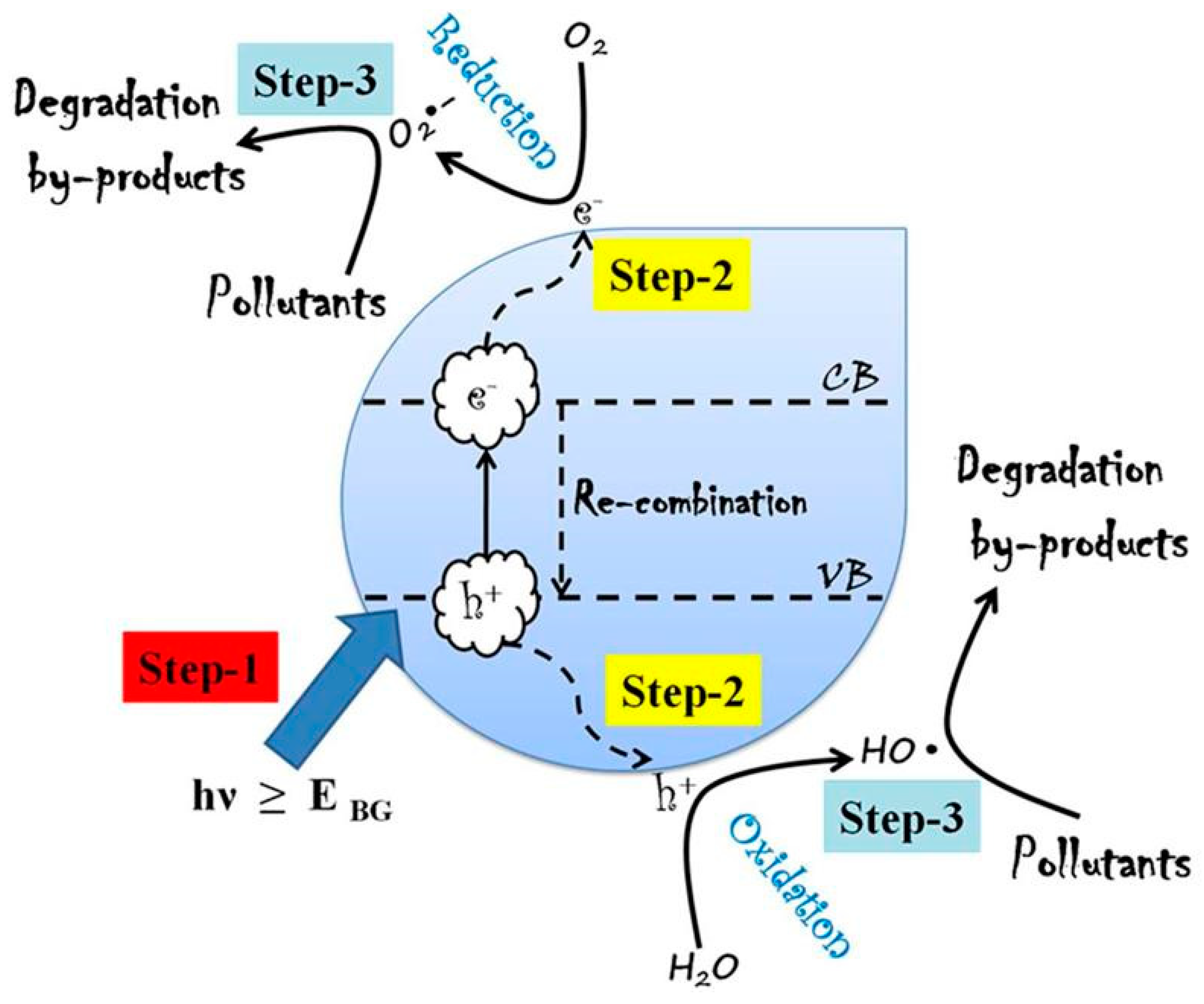
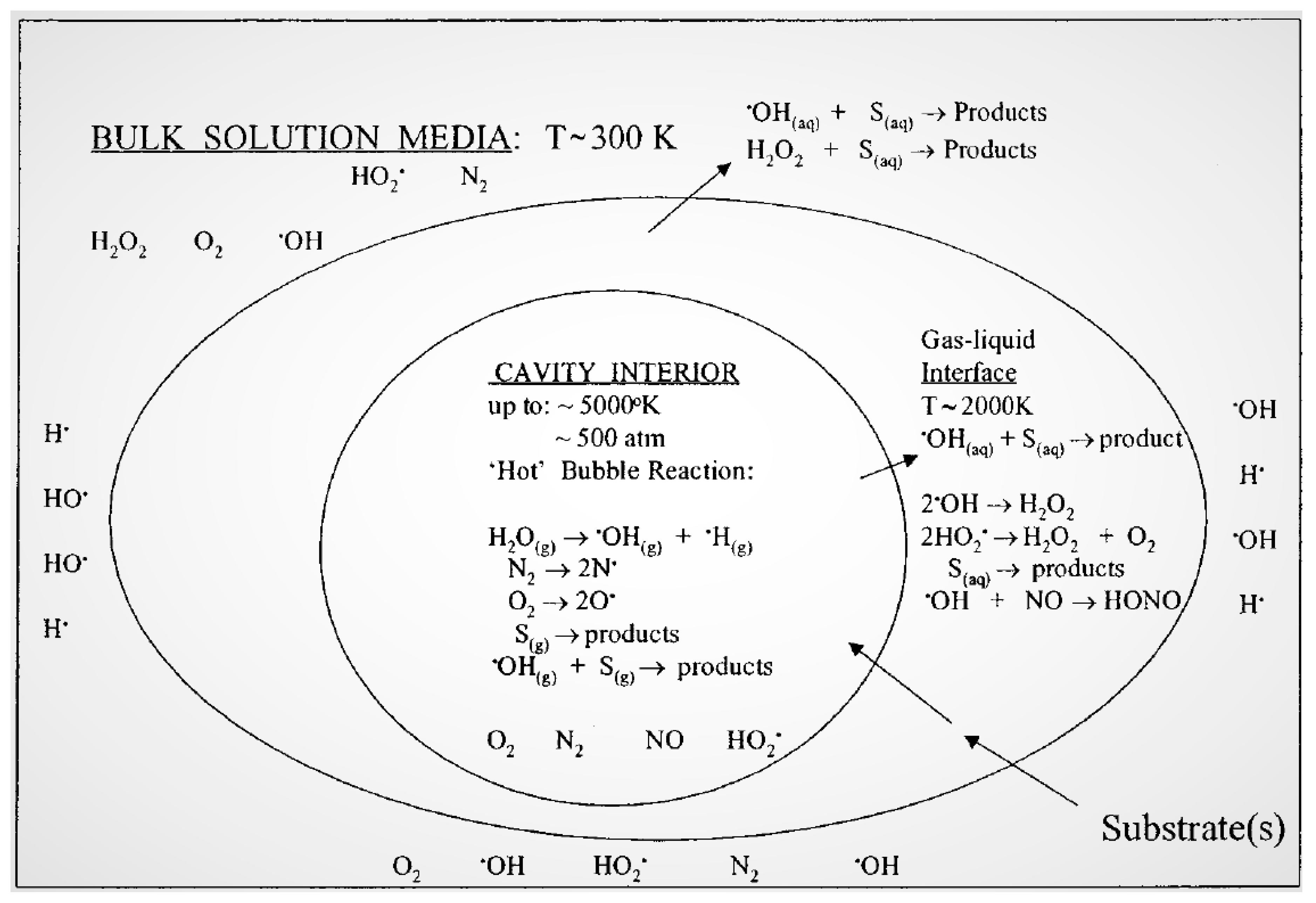
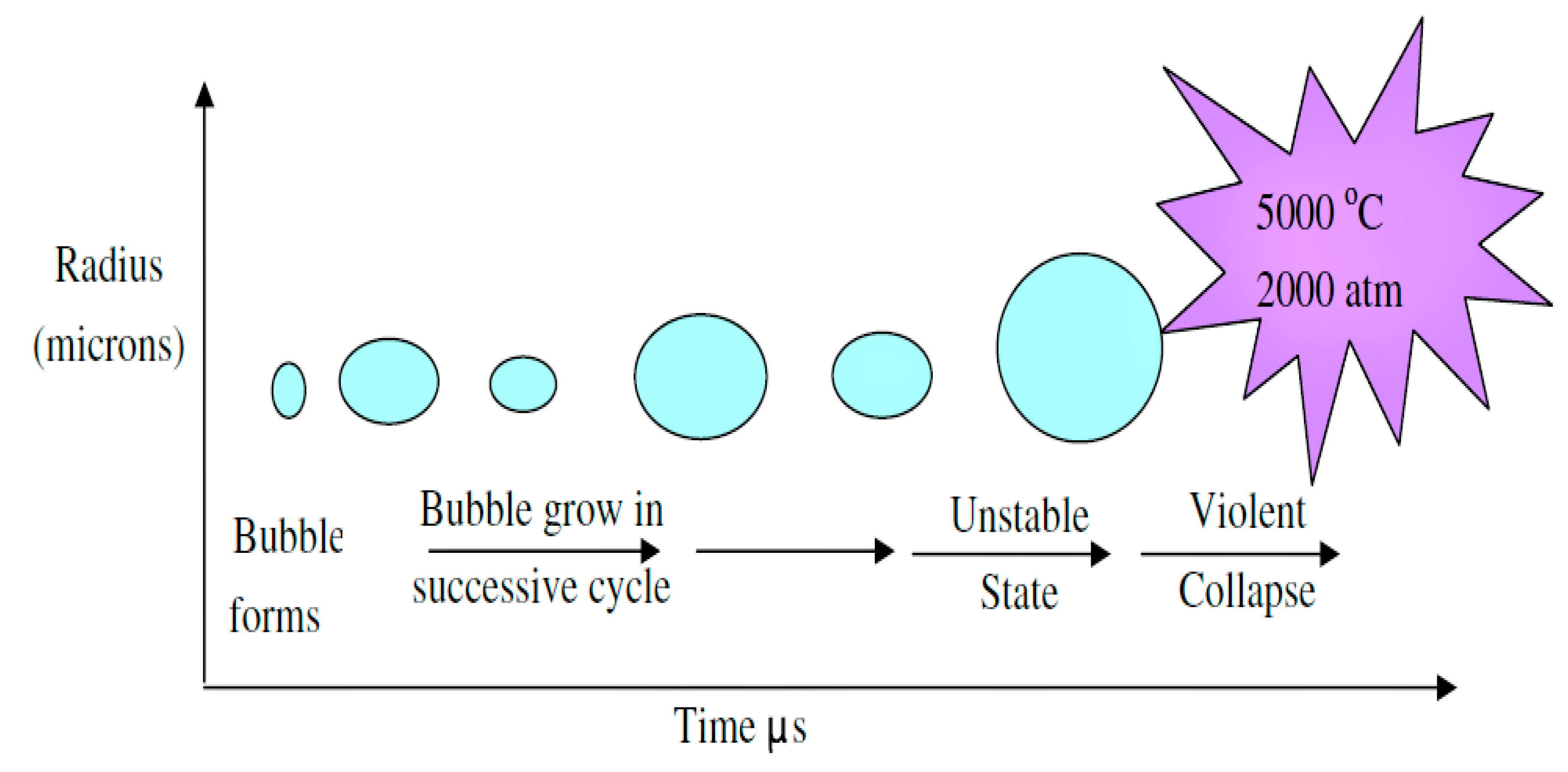

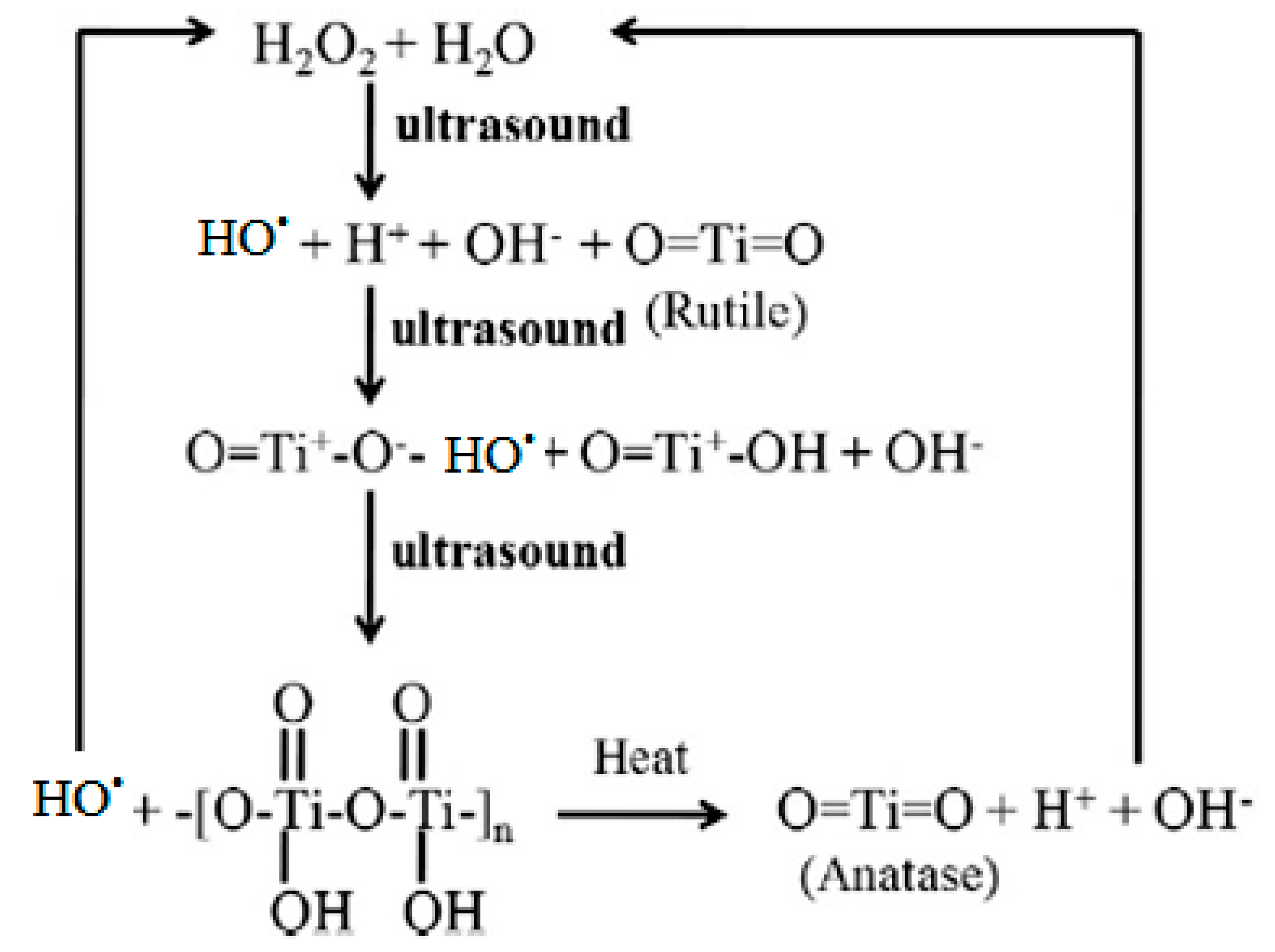
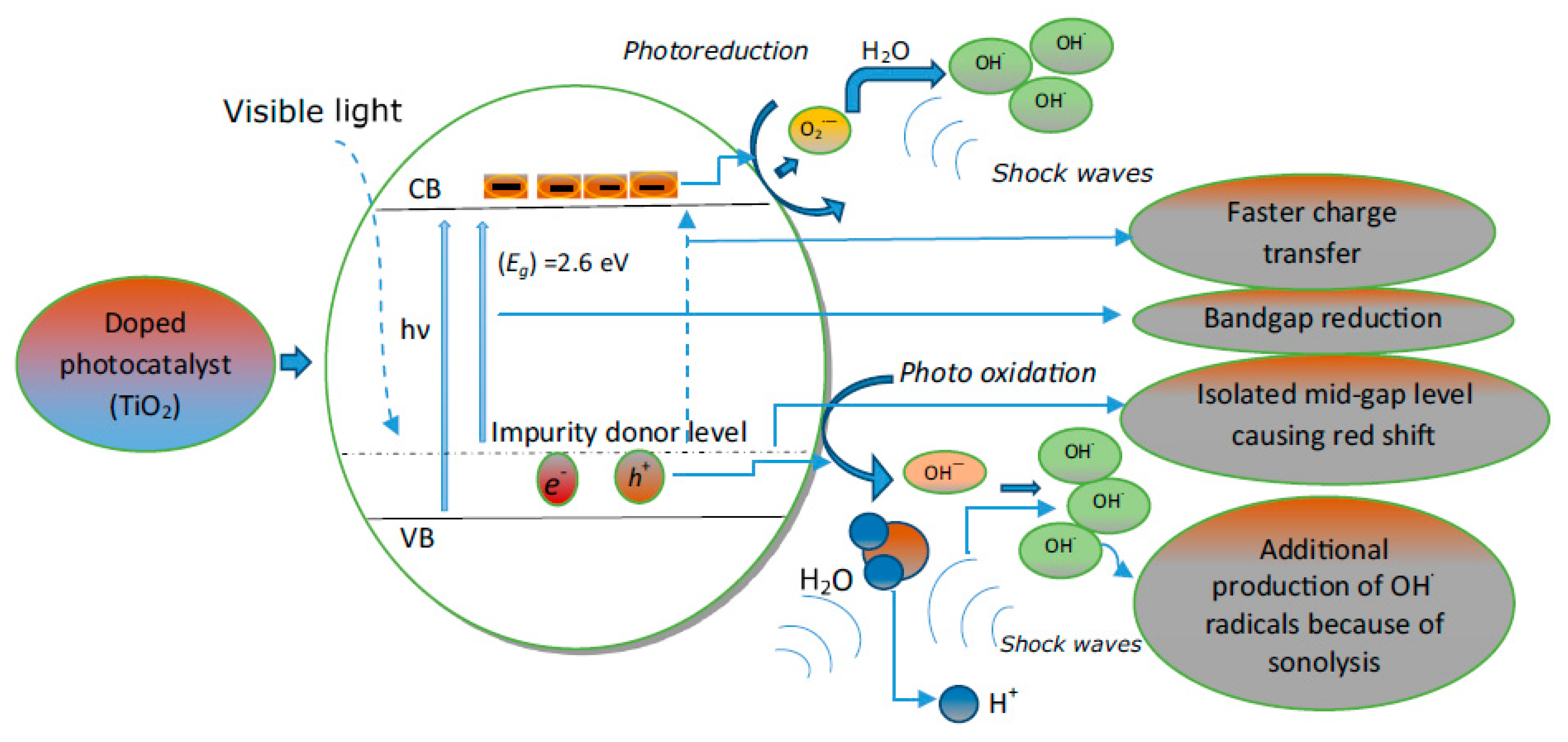
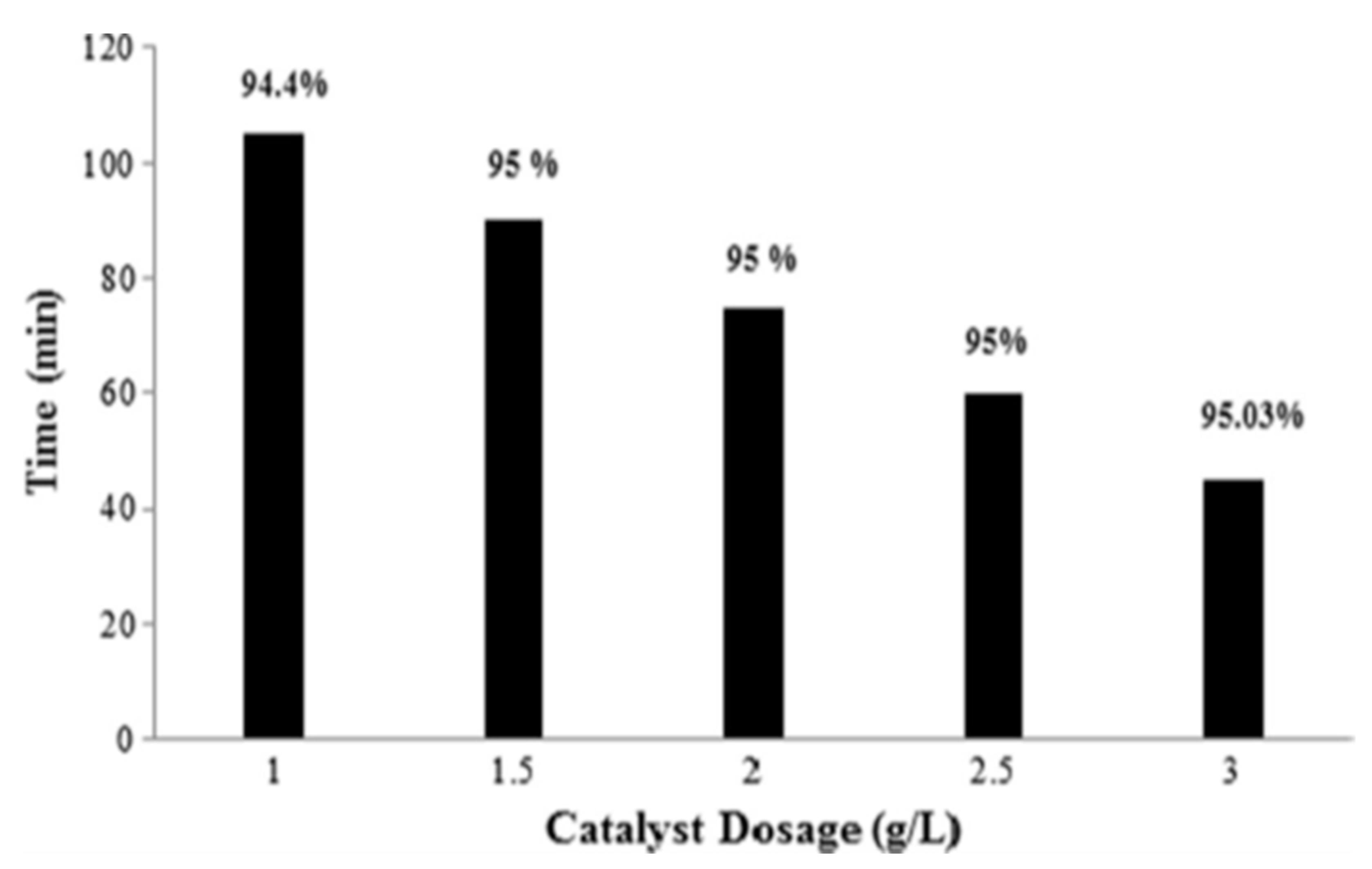

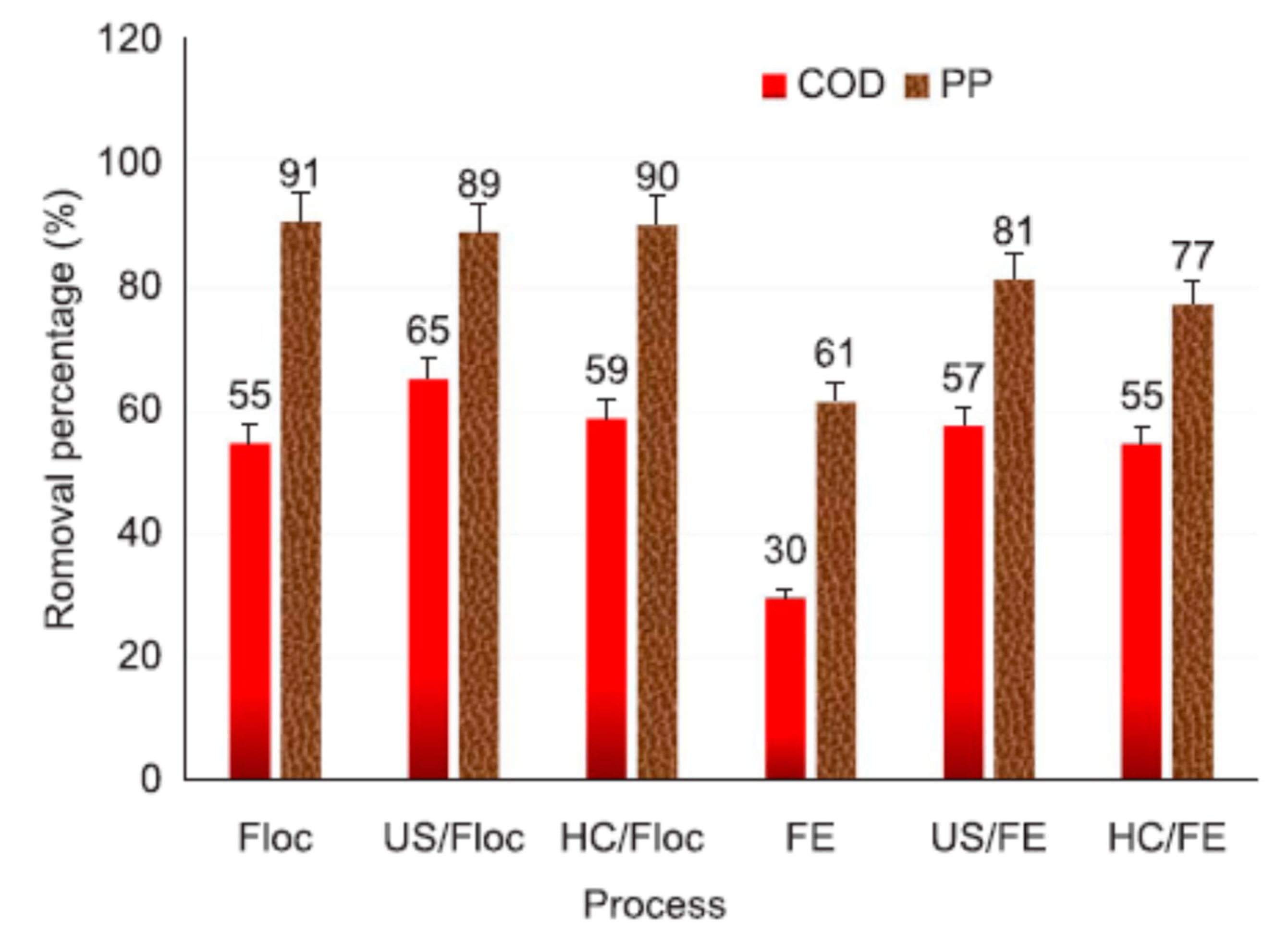
© 2019 by the authors. Licensee MDPI, Basel, Switzerland. This article is an open access article distributed under the terms and conditions of the Creative Commons Attribution (CC BY) license (http://creativecommons.org/licenses/by/4.0/).
Share and Cite
Madhavan, J.; Theerthagiri, J.; Balaji, D.; Sunitha, S.; Choi, M.Y.; Ashokkumar, M. Hybrid Advanced Oxidation Processes Involving Ultrasound: An Overview. Molecules 2019, 24, 3341. https://doi.org/10.3390/molecules24183341
Madhavan J, Theerthagiri J, Balaji D, Sunitha S, Choi MY, Ashokkumar M. Hybrid Advanced Oxidation Processes Involving Ultrasound: An Overview. Molecules. 2019; 24(18):3341. https://doi.org/10.3390/molecules24183341
Chicago/Turabian StyleMadhavan, Jagannathan, Jayaraman Theerthagiri, Dhandapani Balaji, Salla Sunitha, Myong Yong Choi, and Muthupandian Ashokkumar. 2019. "Hybrid Advanced Oxidation Processes Involving Ultrasound: An Overview" Molecules 24, no. 18: 3341. https://doi.org/10.3390/molecules24183341
APA StyleMadhavan, J., Theerthagiri, J., Balaji, D., Sunitha, S., Choi, M. Y., & Ashokkumar, M. (2019). Hybrid Advanced Oxidation Processes Involving Ultrasound: An Overview. Molecules, 24(18), 3341. https://doi.org/10.3390/molecules24183341







